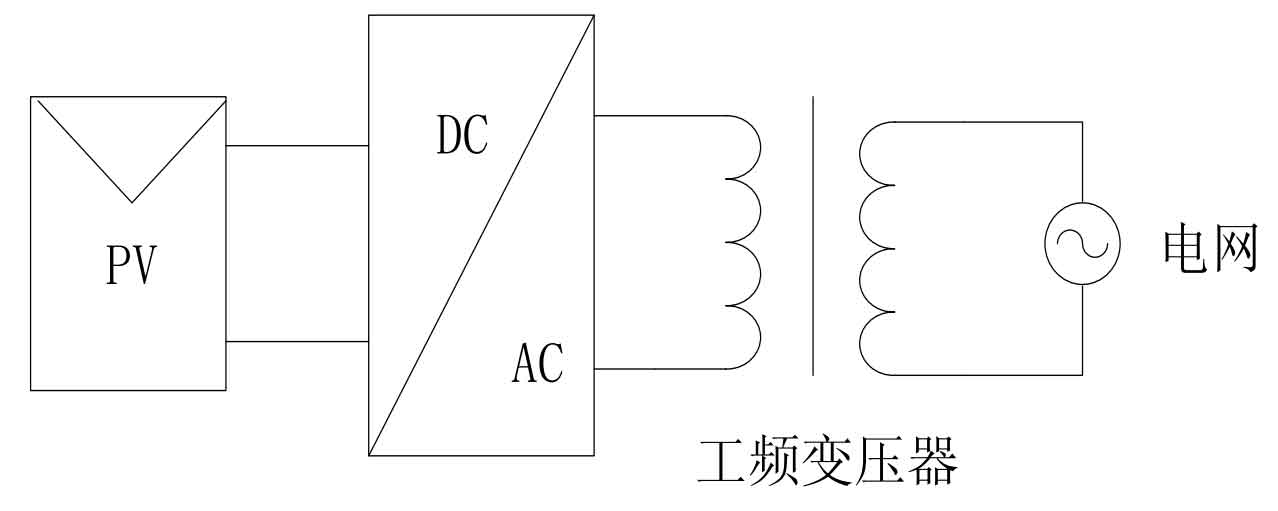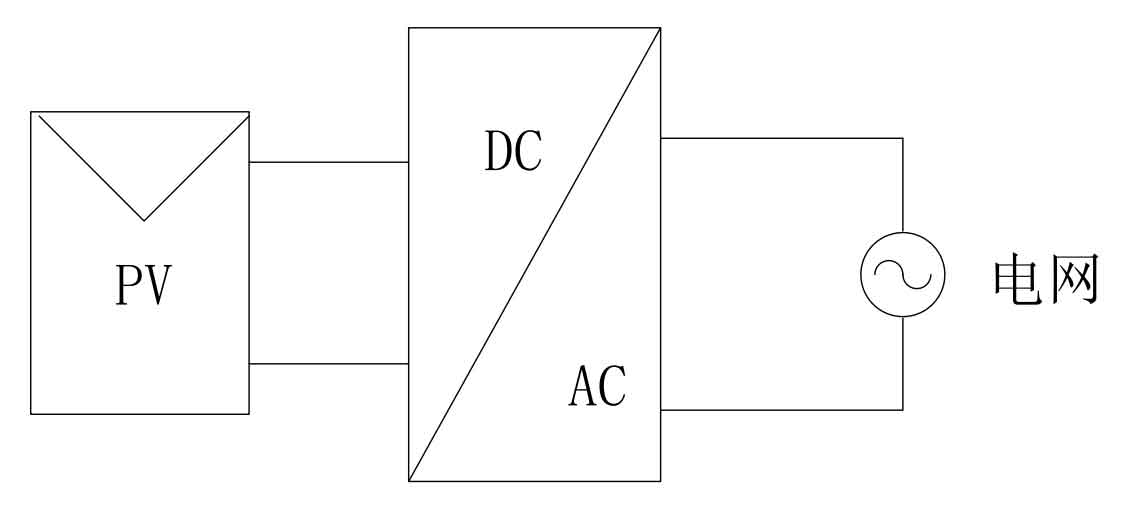Solar inverters, also known as inverter power sources, are AC devices that convert direct current into alternating current. They are an important component of renewable energy generation systems such as solar and wind energy. Therefore, understanding the structure and working principle of solar inverters is crucial for their design.
Solar inverters are the core of achieving photovoltaic energy conversion, playing a decisive role in the stable, safe, reliable, and efficient operation of photovoltaic power generation systems. As shown in Figure 1, the composition structure of photovoltaic power generation systems mainly includes photovoltaic arrays, charge and discharge controllers, energy storage systems, solar inverters, and loads.

The power frequency isolation type is one of the most commonly used structures in solar inverters, as shown in Figure 2. The electrical energy output by the photovoltaic cell is first converted into AC energy at the power frequency through a DC/AC converter, and then transformed into AC energy with a certain amplitude through a power frequency transformer. The power frequency transformer simultaneously completes voltage matching and isolation functions.

The main difference between high-frequency isolated solar inverters and power frequency isolated solar inverters is that the front-end boost circuit uses a high-frequency transformer, replacing the back-end power frequency transformer, which greatly improves the inverter efficiency and reduces the volume and weight of the solar inverter. Figure 3 shows a high-frequency solar inverter.

The direct current output from photovoltaic cells is converted into high-frequency electrical energy through a DC/AC converter, which is then converted into higher voltage AC through a high-frequency transformer. It is then converted into DC with higher voltage through AC/DC conversion and rectification filtering. Finally, it is converted into AC power that meets certain frequency and voltage requirements through DC/AC.
Compared to isolated solar inverters, non isolated solar inverters do not have transformers, which avoids energy loss in the electromagnetic conversion process of transformers and further improves the conversion efficiency of photovoltaic power generation systems. In non isolated systems, the structure of the system becomes simpler, the weight becomes lighter, and the cost is also reduced.

The structure of a single-stage non isolated solar inverter is shown in Figure 4: the solar inverter directly converts DC electrical energy into AC electrical energy. In order to ensure that the DC side voltage meets the voltage level of the inverter AC output, we generally use a photovoltaic array to have a higher output voltage, which is characterized by high efficiency, light weight, simple structure, and low cost.

The structure of a multi-level non isolated solar inverter is shown in Figure 5: the direct current output from the photovoltaic array is first converted into higher voltage direct current through DC/DC, and then converted into qualified alternating current through DC/AC. In general, Boost or Buck/Boost circuits are used for boosting DC voltage, so the DC input voltage range of photovoltaic cell arrays can be very wide, and this structure is becoming increasingly mainstream in the market.
